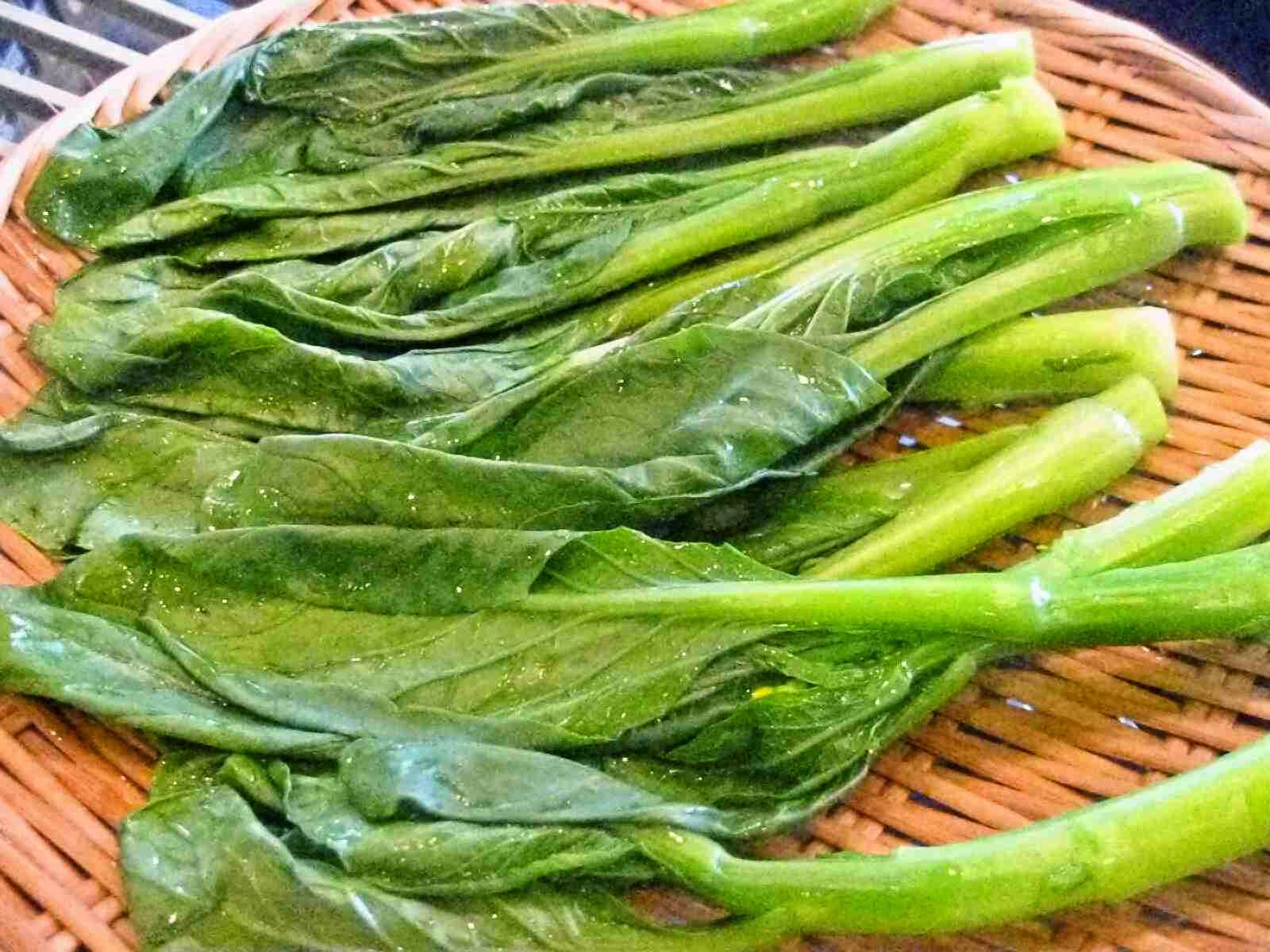This is a reduced-sodium version of chingensai no karashi oisutaasoosu-ae, but with yu choy sum. The pungent aroma of karashi gives a spicy accent to the sweet, rich note of oyster sauce. The combination goes especially well with Chinese greens, especially those with succulent stems. Baby bok choy in the original recipe and yu choy sum in the recipe below are just a few of many good choices of greens. No Chinese greens nearby? Then try broccoli (especially stems), asparagus ... Brussels sprouts are probably a great choice, too.
1/2 of recipe:
32 calories; 2.4 g protein; 0.1 g fat; 4.9 g carbohydrate; 2.2 g net carbs; 212 mg sodium (when using shoyukoji made with 50% reduced-sodium soy sauce); 0 mg cholesterol; 2.7 g fiber
<Ingredients>
Approx. 150 g saishin yu choy sum (158 g in photo)
For dressing
2/3 tsp oyster sauce
1/2 tbsp shoyukoji soy sauce rice malt
1/4 tsp kurozu brown rice vinegar
1/4 tsp Shaoxing wine
1/2 tsp karashi Japanese mustard powder
<Directions>
1.
Bring plenty of water to boil, and blanch yu choy sum.
First put stem ends into boiling water, wait 10-20 seconds, and then put leaf ends.
When leaves turn bright, immediately transfer to zaru strainer or plate to cool.
2.
Microwave kurozu brown rice vinegar and Shaoxing wine for 5 seconds to get rid of sourness and alcohol.
Add a tiny amount of water to karashi powder, and mix well for 10+ seconds after water is incorporated to bring out karashi's pungent aroma.
Add kurozu and Shaoxing wine to karashi mixture, and mix well.
Add everything here to oyster sauce and shoyukoji, mix, and set aside.
3.
When yu choy sum cools (at least to room temperature), squeeze out excess water, and cut into 3-4 cm.
Squeeze out excess water once again, and place in a prep bowl, fluffing with hand.
4.
Immediately before serving, pour dressing, and mix well.
<Notes>
1/2 of recipe:
32 calories; 2.4 g protein; 0.1 g fat; 4.9 g carbohydrate; 2.2 g net carbs; 212 mg sodium (when using shoyukoji made with 50% reduced-sodium soy sauce); 0 mg cholesterol; 2.7 g fiber
<Ingredients>
For dressing
2/3 tsp oyster sauce
1/2 tbsp shoyukoji soy sauce rice malt
1/4 tsp kurozu brown rice vinegar
1/4 tsp Shaoxing wine
1/2 tsp karashi Japanese mustard powder
<Directions>
1.
Bring plenty of water to boil, and blanch yu choy sum.
First put stem ends into boiling water, wait 10-20 seconds, and then put leaf ends.
When leaves turn bright, immediately transfer to zaru strainer or plate to cool.
2.
Microwave kurozu brown rice vinegar and Shaoxing wine for 5 seconds to get rid of sourness and alcohol.
Add a tiny amount of water to karashi powder, and mix well for 10+ seconds after water is incorporated to bring out karashi's pungent aroma.
Add everything here to oyster sauce and shoyukoji, mix, and set aside.
3.
When yu choy sum cools (at least to room temperature), squeeze out excess water, and cut into 3-4 cm.
Squeeze out excess water once again, and place in a prep bowl, fluffing with hand.
4.
Immediately before serving, pour dressing, and mix well.
<Notes>
- The dressing and vegetable can be prepared ahead of time.
- If shoyukoji is not at hand, use soy sauce. Sodium content per serving would be 258 mg when using 50% reduced-sodium soy sauce, and 375 mg with regular soy sauce.
- If you use more than 180 g of vegetable (before removing off any bad ends), the amount of dressing above starts to taste weak.
- Aside from the examples above, this dressing works great with komatsuna, nanohana field mustard, tsuruna New Zealand spinach and tsurumurasaki Indian spinach.













No comments:
Post a Comment